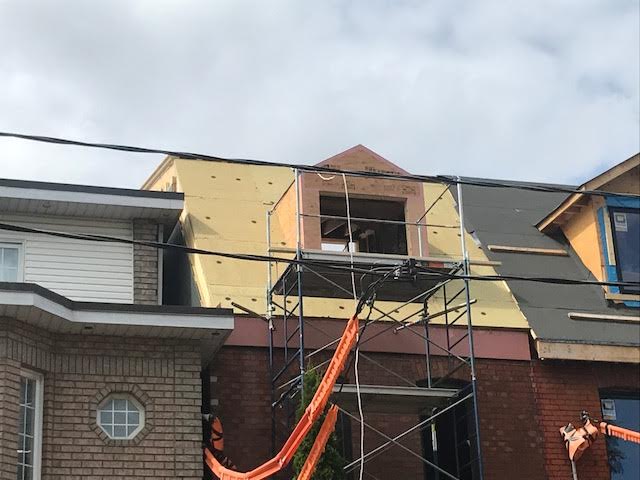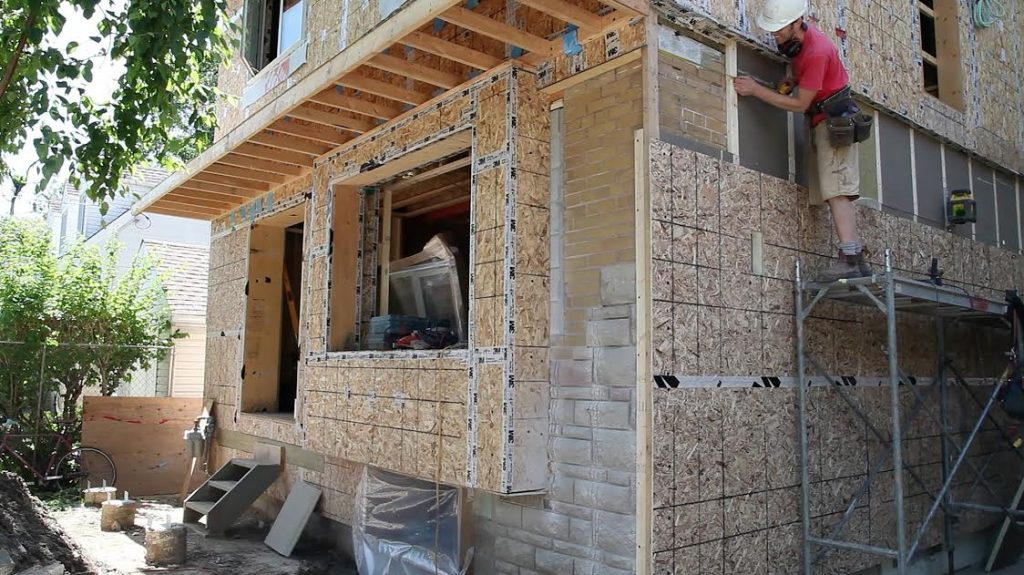Ontario’s building code changes will improve your home performance and comfort

Changes to the Ontario Building Code come into effect on January 1, 2018, stipulating greater emphasis on airtightness, higher requirements for mechanical ventilation of homes, and more effective insulation installation. If you are planning a home renovation, these changes will impact some of your decisions.
The changes are part of an ongoing provincial plan to reduce greenhouse gas emissions. In Ontario, buildings contribute 19 percent of its overall emissions. In Toronto, that figure is 48 percent.
Come January 1, all building renovations will need to include what’s referred to as continuous insulation. Up to now, renovators have installed insulation batt, cellulose or foam in between wood studs. The studs perform at a much lower thermal resistance than the insulation, of course, reducing overall thermal resistance, and creating temperature imbalances which can lead to moisture, ideal fertile conditions for mold. Adding another layer of insulation on the interior or exterior wall assemblies can aid in reducing thermal bridging and improves thermal resistance, reducing your home’s need for energy, lowering utility bills and improving comfort and health.

Greening Homes has been installing continuous insulation for several years given its multiple benefits. Our blog on our Morse Street project highlights this. We are well positioned to adopt these changes, and are happy to see the building code catch up to what we are already doing.
Continuous insulation does add marginally to the project budget. Note that this insulation stipulation applies to your project’s scope. If you are renovating one room, the insulation requirement is applied to that room only. Government and utility rebates help homeowners offset costs associated with home performance improvements. To learn more, visit our blog: Reducing your heating costs when the price of fossil fuels increases.

As covered in two previous blogs, aligning your dream renovation with your budget is a process of give and take, determined prior to the renovation’s start date. Adding continuous insulation to your kitchen, bathroom, or full house needs to be factored into the base building budget.
Toronto’s aging housing stock presents another challenge. When we work on narrow, smaller homes, it is often a game of inches when renovating. Continuous insulation threatens the goal of maximizing space inside the home for several reasons. Much of Toronto’s housing stock includes masonry buildings; adding exterior insulation would completely compromise their aesthetic. As well, in some neighbourhoods, homes are under ‘heritage’ designation and as such, the exterior facades are not allowed to be altered to this extent. Many homeowners will therefore have to add this extra layer of insulation to the interior.
The amount of continuous insulation required is dependant upon the ‘compliance package’ or thermal design of the house that was applied for with the Building Permit initially. At Greening Homes, we are always looking at the house holistically, and ensuring that we are finding the right balance between performance and client budget.
Colleges and universities such as George Brown, Ryerson, and Fanshaw are teaching holistic approaches to the next generation of building professionals. To improve building performance, architects and builders – ideally working together – approach the house as a system.
Unfortunately, this understanding and awareness is still limited in the building sector. We expect to see a huge learning curve in the next few years.
If you are planning a renovation, ask prospective architects and builders about their knowledge of the building code updates. Ensure that the professionals you choose are up to speed and, ideally, have experience in applying the new performance stipulations. The last thing you want is to learn about these code changes after you’ve started your renovation and haven’t factored in these financial inputs.
This article also appeared in Neighbours of High Park Magazine.